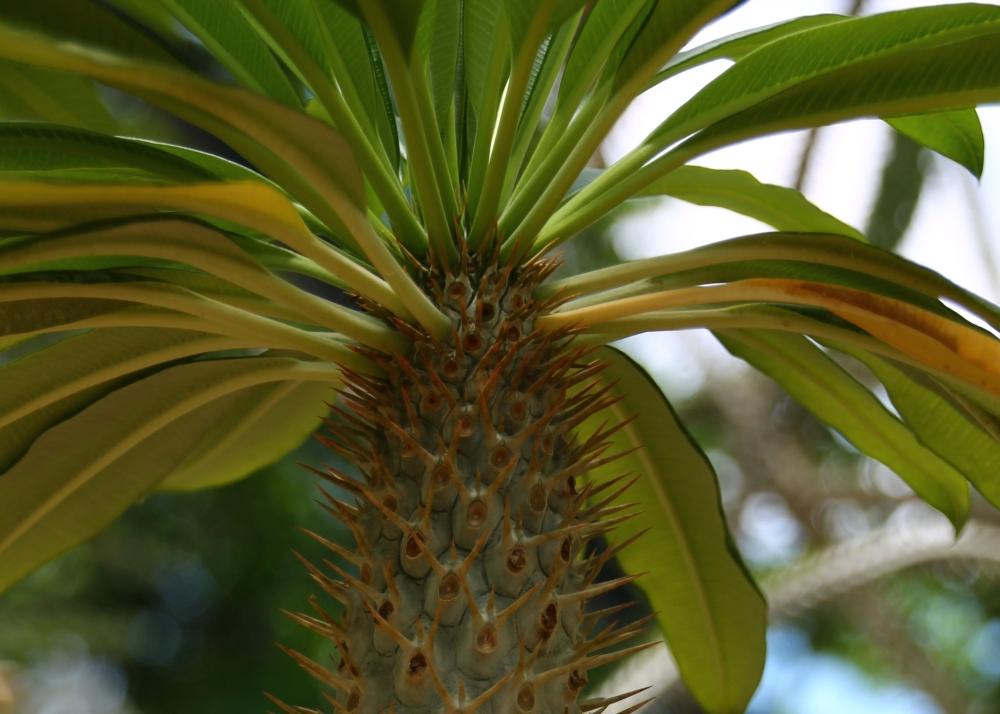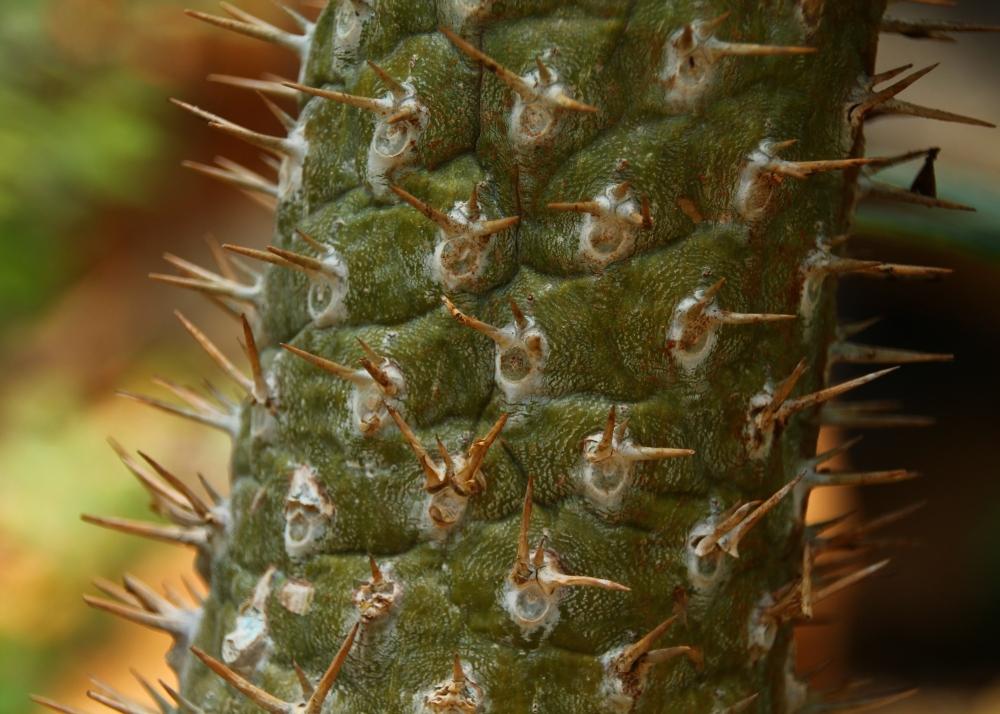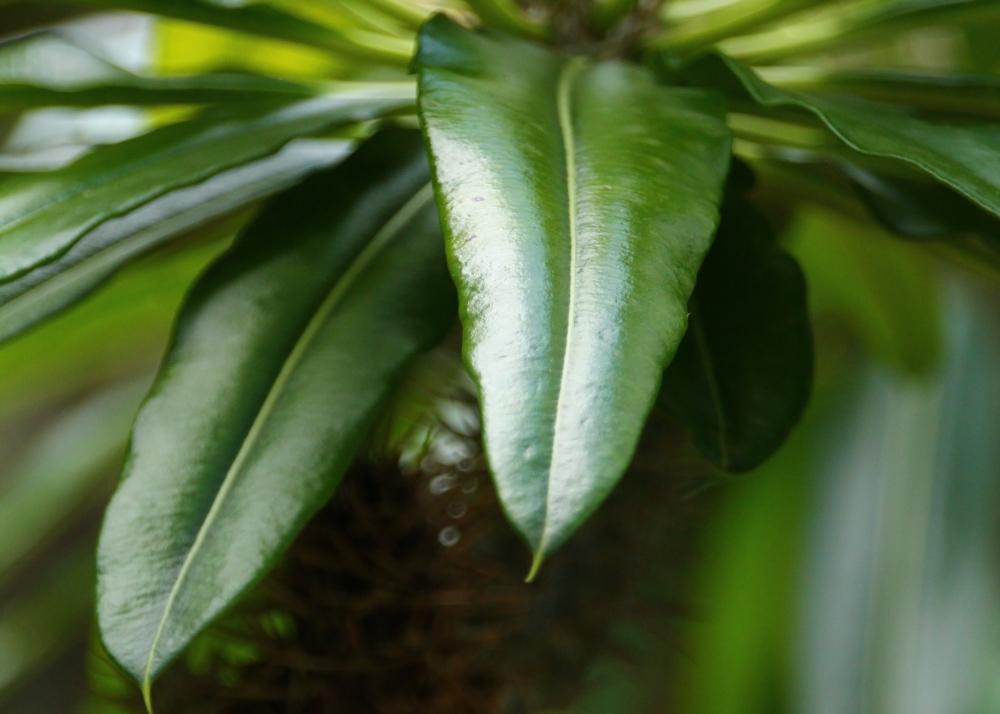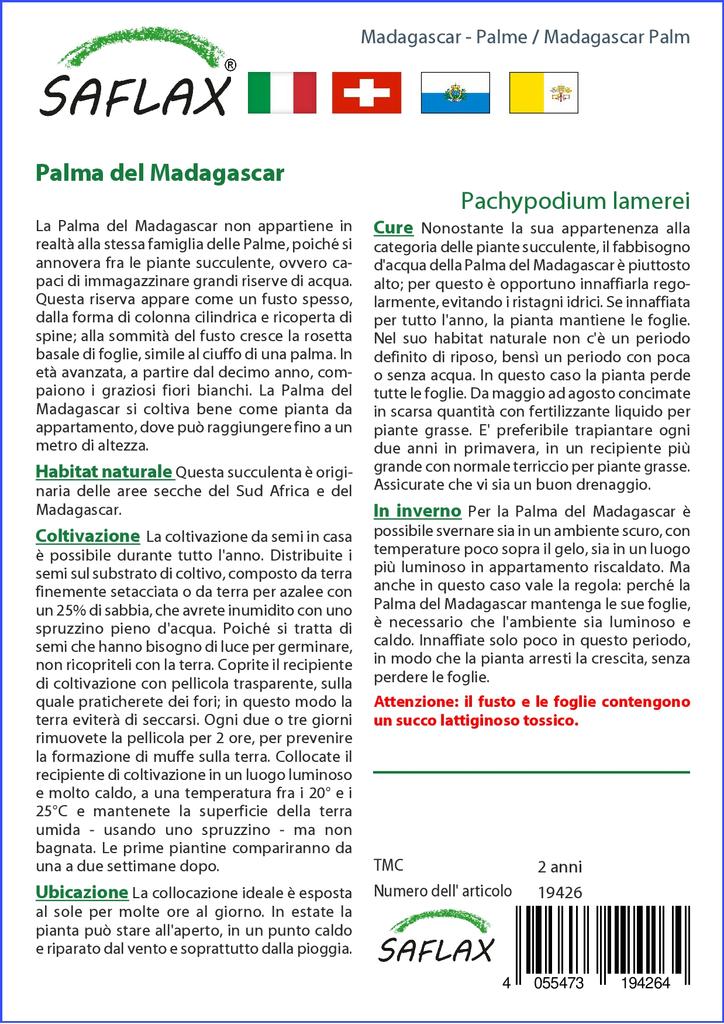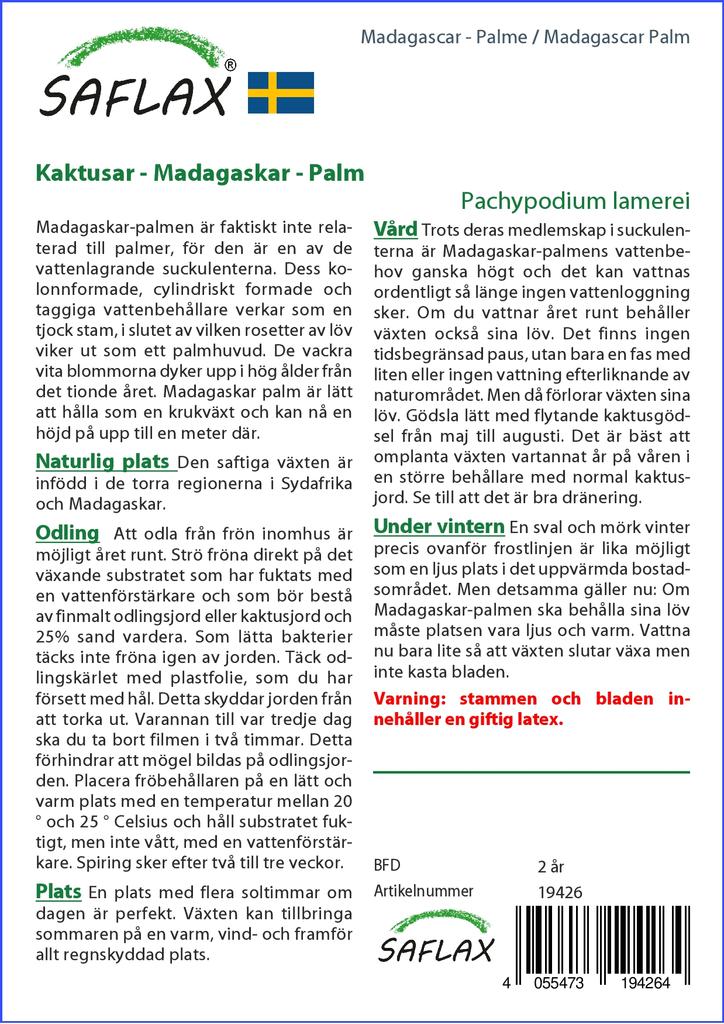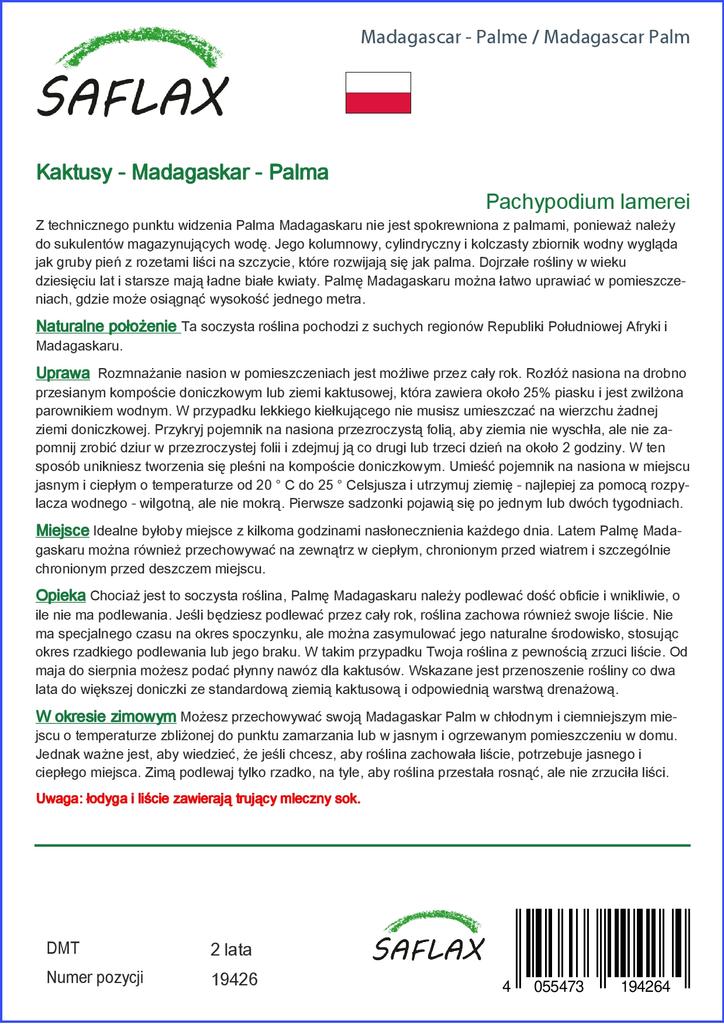Worth knowing:
Technically, the Madagascar Palm is not related to palm trees since it belongs to the water-storing succulent plants. Its columnar, cylindrical shaped and spiked water reservoir looks like a thick trunk with leaf rosettes on top that unfold similar to a palm tree. Matured plants with ten years of age and older develop neat white-coloured flowers. The Madagascar Palm can easily be cultivated indoors, where it can grow up to one meter tall.
Natural Location:
The succulent plant is native in the arid regions of South Africa and Madagascar.
Cultivation:
Seed propagation indoors is possible throughout the year. Spread the seeds onto finely sieved potting compost or cactus earth that contains about 25% sand and is moistened with a water vaporizer. For a light germinator you don’t need to put any potting earth on top. Cover the seed container with clear film to prevent the earth from drying out, but don’t forget to make some holes in the clear film and take it every second or third day completely off for about 2 hours. That way you avoid mold formation on your potting compost. Place the seed container somewhere bright and warm with a temperature between 20°C and 25°Celsius and keep the earth – preferably with a water sprayer – moist, but not wet. The first seedlings will come up after one or two weeks.
Place:
A place with a couple of hours of sunlight every day would be ideal. During summer, the Madagascar Palm can also be kept in a warm, wind-protected and especially rain-sheltered place outdoors.
Care:
Even though it is a succulent plant, the Madagascar Palm needs to be watered quite plentiful and penetratingly, as long as there is no waterlogging. If you keep watering throughout the year, the plant will also keep its foliage. There is no special time for a resting period, but you can simulate its natural habitat with a period of sparsely watering or no watering at all. In that case, your plant will certainly shed the leaves. From May until August you can give some fluid fertilizer for cactus plants. Every two years, it is advisable to shift the plant into a bigger pot with standard cactus soil and a proper drainage layer.
During the winter:
You can keep your Madagascar Palm either in a cool and darker place with a temperature just about the freezing point, or in a bright and heated room in the house. However, it is important to know that if you want your plant to keep the foliage, it needs a bright and warm place. Water during winter only sparsely, just enough that the plant stops growing, but doesn’t shed the leaves.
Picture credits:
- © © H. Zell - CC-BY-SA-3.0 - http://creativecommons.org/licenses/by-sa/3.0
- © Frank Laue - © Saflax - http://www.saflax.de/copyright
- © Frank Laue - © Saflax - http://www.saflax.de/copyright
- © Sabine Laue - © Saflax - http://www.saflax.de/copyright
- © Sabine Laue - © Saflax - http://www.saflax.de/copyright
- © Sabine Laue - © Saflax - http://www.saflax.de/copyright
- © Sabine Laue - © Saflax - http://www.saflax.de/copyright
- © Sabine Laue - © Saflax - http://www.saflax.de/copyright
- © Sabine Laue - © Saflax - http://www.saflax.de/copyright














